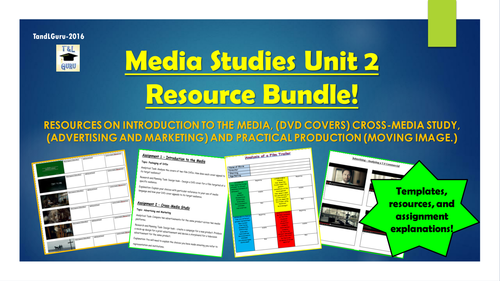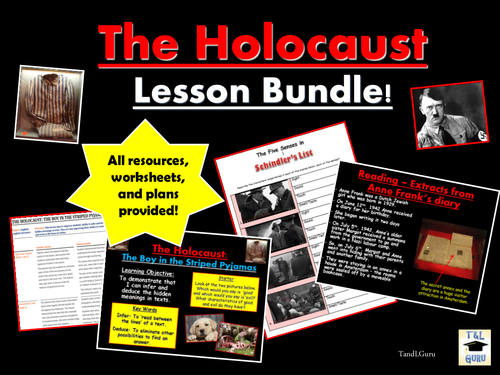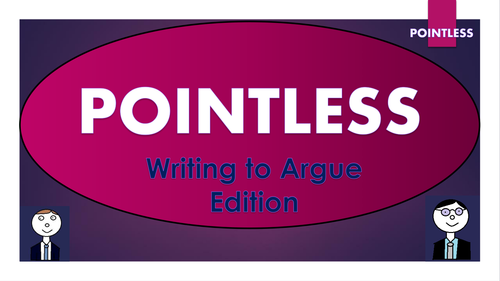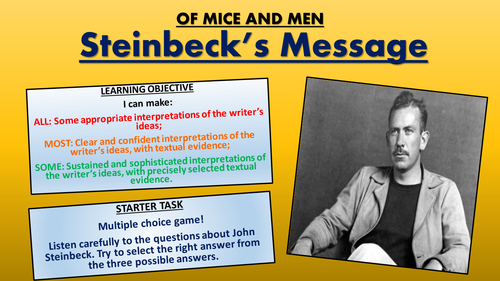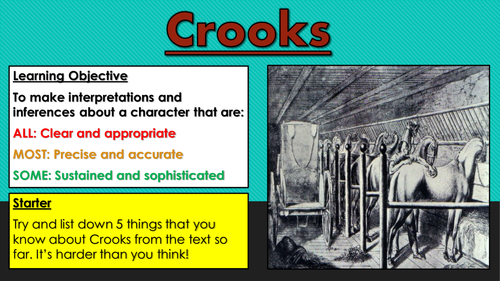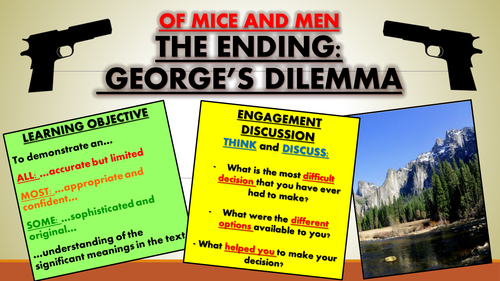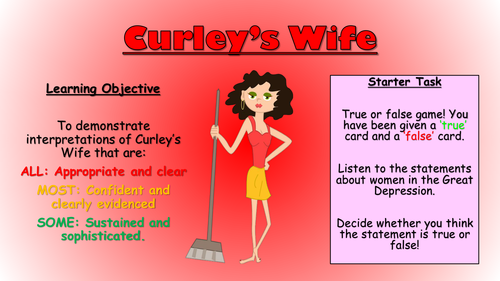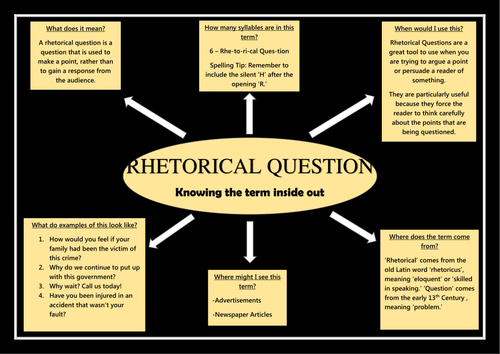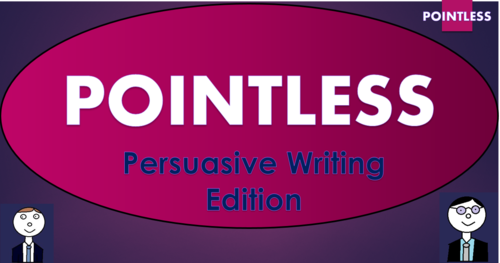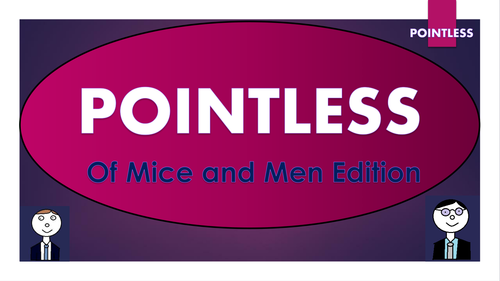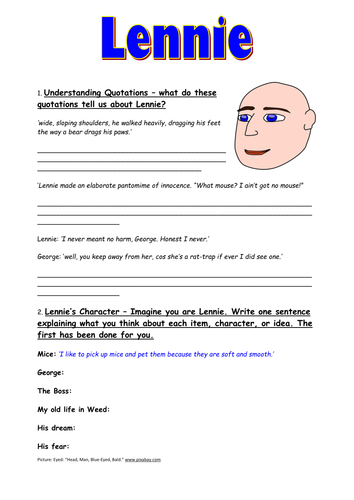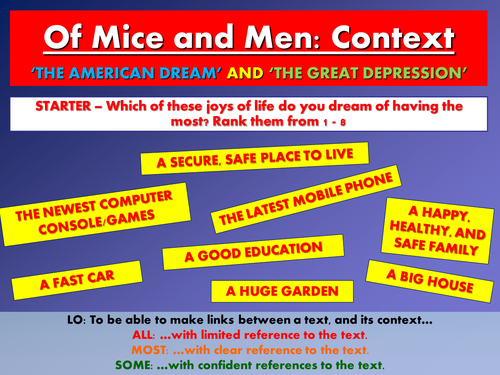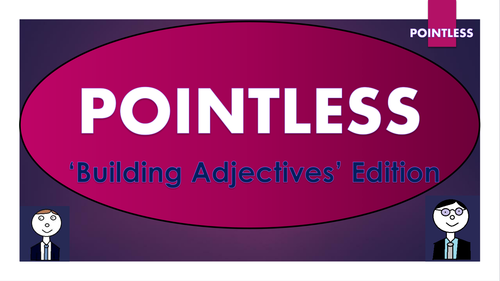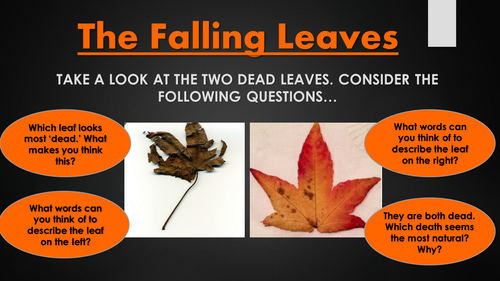
3k+Uploads
1967k+Views
2278k+Downloads
Pedagogy and professional development

Media Studies: Unit 2 Assignments Resource Bundle!
Here I have collated each of the resources and templates that I have used throughout the year to enable my students to complete the Media Studies Unit 2 assignments. There are around 20 resources here. Each of the resources are clear, concise and appropriate to the requirements of the assignments. Included are resources on:
- Introduction to Media Studies (a number of tasks and templates that I used prior to the first assignment)
- Assignment 1: Intro to Media (DVD Covers)
- Assignment 2: Cross-Media Study (Advertising and Marketing)
- Assignment 3: Practical Production and Evaluation (Film Trailers)
If you only need resources for one of the assignments, I am making the resources for the individual assignments available for £1.

The Holocaust: Lesson Bundle!
Perfect for as either an English or a Citizenship scheme, this Holocaust scheme aim to build students' key reading and writing skills through the teaching of one of the most important and poignant worldwide historical events: The Holocaust. Using a range of age-appropriate and sensitive Holocaust Literature, this scheme also enables students to explore a range of important social and moral issues.
Engaging, differentiated, and easily adaptable, each of these lessons aims to improve students skills in writing for a key purpose (informing, describing, arguing, analysing) whilst also being incredibly engaging and interesting. Students also read and infer from a number of key extracts from texts, (provided) each with a different and important take on the subject matter. Each lesson follows a logical learning journey to ensure that students learn in bite-size steps:
- Defining;
- Identifying;
- Analysing;
- Creating;
- Peer or self evaluating.
All of the lessons are interactive, employ a variety of different teaching and learning methods and styles, and are visually-engaging. Resources, worksheets, and lesson plans are all provided.
All images are licensed for commercial use and are cited on the last slide of each presentation.

The Holocaust: Schindler's List
This lesson aims to help students to write descriptively, using a range of descriptive writing techniques. Students also learn how to incorporate the five senses into their writing. Furthermore, students explore social and moral issues such as 'swimming against the tide' and 'being different,' through the story of Oskar Schindler.
Informative and engaging, this lesson follows a clear and logical learning journey. Students learn to:
- Define the key term 'humane'
- Understand the story of Oskar Schindler, and consider the social and moral dilemmas that he faced;
- Consider decisions that they have had to make which contrast to popular opinion;
- Remember the five senses, and discuss why they are important to descriptive writing;
- Use the five senses to create descriptive sentences based on scenes from Schindler's List;
- Write a descriptive piece about a difficult decision that they have had to make;
- Peer-assess each others' learning attempts.
Resources included are: A whole-lesson PowerPoint, that guides the teacher and learners throughout the entire lesson, an engaging worksheet, a writing to describe help-sheet, and a teacher guidance sheet.
Note: I'm aware that this is a 15 film - however the clips that I have selected are not amongst the most graphic, and so I feel that the lesson can be used with students younger than 15. You will need a Youtube connection for the links to work.
All images are cited at the end of the PowerPoint presentation, and are licensed for commercial use.

The Holocaust: Anne Frank's Diary
This lesson aims to help students to build their skill at analysing the language choices in texts, whilst also providing students with valuable SMSC messages about the horror of the Holocaust. Students also hone their skills of writing to analyse, in response to extracts from 'Anne Frank's Diary.'
Informative and engaging, this lesson follows a clear and logical learning journey. Students learn to:
- Define key terms related to the historical context of The Holocaust;
- Remember and understand key information about Anne Frank's experiences, that they learn from an engaging PowerPoint presentation;
- Read extracts from Anne Frank's diary;
- Answer a range of questions to demonstrate their understanding of Anne's diary;
- Analyse the language features used by Anne Frank to create dramatic images in the mind of the reader;
- Peer-assess each others' learning attempts.
Included in this resource pack: A comprehensive, whole-lesson, visually engaging PowerPoint presentation, which guides the teacher and learners through the lesson, a writing to analyse help-sheet, an engaging and helpful worksheet, extracts from 'The Boy in the Striped Pyjamas' and teacher guidance notes.
All images are cited at the end of the PowerPoint presentation, and are licensed for commercial use.

Pupil Progress Data Analysis Template (Automatic percentage formulas and pie charts!)
This neat, compact, and visually-engaging data analysis template is an invaluable tool for school leaders, teaching and learning leaders, curriculum leaders, or any other school-based staff responsible for the inputting and analysis of pupil progress data.
All that the resource requires is for users to input raw pupil progress data, and it will automatically calculate percentages, and create colourful pie-charts to provide detailed yet easily-readable headline figures. Each excel sheet has been designed to fit onto one A4 page, for easy reading, and this includes space for users to input analysis of the data and plot interventions.
5 sheets have been pre-populated with example data, but the user can create as many extra sheets as they want by simply right-clicking the tabs, selecting 'move or copy', and then ticking the 'create copy' box. The sheets that are created will contain all of the same formulas and pie-charts, to enable you to create page after page of detailed progress analysis!
All of the columns and row names in the tables can be edited to suit the language used by your school, but please avoid altering the percentages rows, as you may lose the formulas.
If you have any further questions after purchasing this product, please contact me at tandlguru@yahoo.co.uk
Thanks!

Pointless: Writing to Argue Edition
Based on the popular game show 'Pointless', this resource is perfect for use as a starter activity, plenary, or revision tool. Editable, so that you can change to any other topic or change questions. Containing almost 30 slides of sound clips, engaging visuals, and suitably challenging questions, this resource is effective at both promoting engagement and enhancing learning. There are several full rounds of questions to build learning of Writing to Argue:
1. Identifying Arguing/ Persuasive Devices
2. Defining Arguing Devices
3. Identifying and Unscrambling Text Types and Jobs that use Structured Arguments
4. Naming Opposing Connectives (to help structure arguments.)
The nature of the game ensures that this resource can challenge students of all levels.

Of Mice and Men: Steinbeck's Message
This engaging and interesting lesson aims to improve students' knowledge of John Steinbeck's key messages in his novella Of Mice and Men. It also aims to build their skills in retrieving information from texts, considering the outcomes about the characters, and making precise and confident interpretations about Steinbeck's intentions.
The lesson uses a range of tasks, that require students to use their visual and interpersonal skills. It follows this learning journey:
- Investigating the life of John Steinbeck, including his influences, experiences, and beliefs;
- Finding relevant quotations to ascertain which characters fulfilled their dreams, and what this could tell us about Steinbeck's message;
- Completing analysis paragraphs on how Steinbeck reveals his message through the final chapters of the text, using a template and a success criteria;
- Evaluating each others' argumentative attempts.
The resource includes a comprehensive and visually engaging PowerPoint presentation, a worksheet to decipher which characters achieved their dreams, a template and success criteria for the main task, and a lesson plan/ teacher guidance sheet.
All images in this resource are licensed for commercial use, and are cited on the final slide of the lesson presentation.
You can choose to buy this resource alone, or as part of the 'Of Mice and Men - All Lessons and Scheme' bundle, which contains seven full lessons, resources, teachers notes, and PowerPoint presentations, plus a Pointless Of Mice and Men game, for just £5!

Of Mice and Men: Characterisation of Crooks
This engaging and informative lesson aims to improve students' knowledge and understanding of the character of Crooks in Steinbeck's Of Mice and Men: His dreams, his loneliness, and how his plight is a product of living in 1930s America. The lesson also aims to improve students' analytical skills, so that they can demonstrate sustained and sophisticated interpretations of the character.
This pack includes the full lesson presentation, with tasks and key information, an extract from the text with close reading questions, a writing to analyse help-sheet, and full teacher guidance. The learning journey is clear and progressive, following a pathway of increasingly more difficult tasks, including:
- An opening task to ascertain what is known about Crooks, and racism in 1930s America
- An extract from the text that highlights some of his characteristics and his loneliness.
- Questions to encourage students to infer and deduce hidden meanings, and understand Steinbeck's message,
- Joint creation of an analysis success criteria;
- An opportunity to answer an exam style question based upon the character of Crooks;
- A chance to peer assess against the success criteria.
All images are licensed for commercial use, and are cited on the final slide of the presentation.
You can choose to buy this resource alone, or as part of the 'Of Mice and Men - All Lessons and Scheme' bundle, which contains seven full lessons, resources, teachers notes, and PowerPoint presentations, plus a Pointless Of Mice and Men game, for just £5!

Of Mice and Men: The Ending - George's Dilemma
This engaging and interesting lesson aims to improve students' knowledge of the final events of the novel (the killing of Lennie by his best friend, George) in John Steinbeck's Of Mice and Men. It also aims to build their skills in retrieving information from texts, understanding the writer's ideas and opinions, and making precise and confident interpretations about texts.
The lesson uses a range of tasks, that require students to use their visual and interpersonal skills. It follows this learning journey:
- Reading, and interpreting the ending of the text;
- Inferring the hidden meanings in the final section of the text;
- Identifying the options available to George, and evaluating the pros and cons for each of them;
- Arguing a viewpoint either justifying or condemning George's actions;
- Evaluating each others' argumentative attempts.
The resource includes a comprehensive and visually engaging PowerPoint presentation, a worksheet to evaluate George's reasoning, an abstract from the text, a help-sheet for writing to analyse, and a lesson plan/ teacher guidance sheet.
All images in this resource are licensed for commercial use, and are cited on the final slide of the lesson presentation.
You can choose to buy this resource alone, or as part of the 'Of Mice and Men - All Lessons and Scheme' bundle, which contains seven full lessons, resources, teachers notes, and PowerPoint presentations, plus a Pointless Of Mice and Men game, for just £5!

Of Mice and Men - Characterisation of Curley's Wife
This engaging and informative lesson aims to improve students' knowledge and understanding of the character of Curley's Wife in Steinbeck's Of Mice and Men: Her dreams, her loneliness, and how her plight is a product of the Great Depression. The lesson also aims to improve students' analytical skills, so that they can demonstrate sustained and sophisticated interpretations of the character.
This pack includes the full lesson presentation, with animations and key information, a double-page worksheet with clear and concise instructions, True and False cards for the starter activity, a writing to analyse help-sheet, and full teacher guidance. The learning journey is clear and progressive, following a pathway of progressively more difficult tasks, including:
- An engaging true or false game to help students understand what life was like for women in the Great Depression;
- A worksheet that enables students to demonstrate understanding of key quotations about Curley's Wife, and also to link Curley's Wife to key themes and ideas.
- Close reading of a modelled analysis paragraph;
- Joint creation of an analysis success criteria;
- An opportunity to answer an exam style question based upon the character of Curley's Wife;
- A chance to peer assess against the success criteria.
All images are licensed for commercial use, and are cited on the final slide of the presentation.
You can choose to buy this resource alone, or as part of the 'Of Mice and Men - All Lessons and Scheme' bundle, which contains seven full lessons, resources, teachers notes, and PowerPoint presentations, plus a Pointless Of Mice and Men game, for just £5!

Persuasive Devices - Knowing the Words Inside Out! (Helpsheets, Poster, and Worksheet Templates)
These colourful, engaging and informative posters/ help-sheets are perfect to help your students gain a broad and deep understanding of each of the key persuasive devices, thus vastly improving their textual analysis and enhancing their persuasive/argumentative writing attempts.
Each sheet displays the key word in the middle, and then answers some of the key questions surrounding the words, including:
- What does it mean?
- How many syllables does it have?
- What are examples of it?
- How do I spell it?
- When would I use this?
- What type of word is it?
- Where does the word come from?
There are sheets for: Statistics, Personal Pronouns, Anecdotes, Rhetorical Questions, Repetition, Colloquial Language, Connectives, List of Three, Imperatives, Emotive Language. These can be used as help-sheets as students write (my students love this) or blown up to A3 to use as classroom posters.
I have also provided blank templates for each word, so that students can fill in the everything that they know about the words themselves, which makes for an excellent starter, plenary, or recap activity.

Pointless - Persuasive Writing Edition
Based on the popular game show ‘Pointless’, this resource is perfect for use as a starter activity, plenary, or revision tool. Editable, so that you can change to any other topic or change questions. Containing almost 30 slides of sound clips, engaging visuals, and suitably challenging questions, this resource is effective at both promoting engagement and enhancing learning. There are several full rounds of questions to build learning of Persuasive Writing:
1. Emotive Language
2. Definitions of Persuasive Devices
3. Adding and Contrasting Connectives
4. Remembering Persuasive Devices
The nature of the game ensures that this resource can challenge students of all levels.
A blank template is now included, so that you can create your own Pointless games!

Descriptive Devices - Knowing the Words Inside Out! (Helpsheets, Posters and Worksheet Templates)
These colourful, engaging and informative posters/ help-sheets are perfect to help your students gain a broad and deep understanding of each of the key descriptive devices, thus vastly improving their textual analysis and enhancing their creative writing attempts.
Each sheet displays the key word in the middle, and then answers some of the key questions surrounding the words, including:
- What does it mean?
- How many syllables does it have?
- What are examples of it?
- How do I spell it?
- When would I use this?
- What type of word is it?
- Where does the word come from?
There are sheets for: Similes, Metaphors, Hyperbole, Adjectives, Adverbs, Alliteration, Onomatopoeia, Verbs, Personification, and Verbs. These can be used as help-sheets as students write (my students love this) or blown up to A3 to use as classroom posters.
I have also provided blank templates for each word, so that students can fill in the everything that they know about the words themselves, which makes for an excellent starter, plenary, or recap activity.

Of Mice and Men - The Themes of Dreams and Loneliness
This engaging and interesting lesson aims to improve students' knowledge of the main themes (Dreams and Loneliness) in John Steinbeck's Of Mice and Men. It also aims to build their skills in retrieving information from texts, understanding the writer's ideas and opinions, and making precise and confident interpretations about texts.
The lesson uses a range of tasks, that require students to use their visual and interactive skills. It follows this learning journey:
- Understanding what dreams and loneliness are, and how we each experience them;
- Defining themes and understanding how writers use them;
- Understanding how and why themes are used in other famous texts;
- Retrieving evidence from the text to demonstrate where the characters experience dreams and loneliness;
- Analysing how the themes are used to help get across John Steinbeck's ideas about 1930s America;
- Evaluating each others' analytical attempts.
The resource includes a comprehensive and visually engaging PowerPoint presentation, a worksheet for recording the retrieved quotations, a helpful template for the main task, and a lesson plan/ teacher guidance sheet.
All images in this resource are licensed for commercial use, and are cited on the final slide of the lesson presentation.
You can choose to buy this resource alone, or as part of the 'Of Mice and Men - All Lessons and Scheme' bundle, which contains seven full lessons, resources, teachers notes, and PowerPoint presentations, plus a Pointless Of Mice and Men game, for just £5!

Pointless - Of Mice and Men Edition
Based on the popular game show 'Pointless', this resource is perfect for use as a starter activity, plenary, or revision tool. Editable, so that you can change to any other topic or change questions. Containing almost 30 slides of sound clips, engaging visuals, and suitably challenging questions, this resource is effective at both promoting engagement and enhancing learning. There are several full rounds of questions to build learning of Of Mice and Men:
1. The characters in Of Mice and Men
2. Quotations from the text
3. Settings, themes, and objects
4. Animals in Of Mice and Men
The nature of the game ensures that this resource can challenge students of all levels.

Of Mice and Men - Characterisation of Lennie
This informative and engaging lesson aims to improve students' knowledge and understanding of the character of Lennie in Steinbeck's Of Mice and Men. It also aims to improve their analytical skills, so that they can demonstrate sustained and sophisticated interpretations of the character.
This pack includes the full lesson presentation, with animations and key information, a worksheet with clear and concise instructions, an example analysis extract, and full teacher guidance. The learning journey is clear and progressive, following a pathway of progressively more difficult tasks, including:
- An engaging memory game task to recognise and remember items and ideas that are related to the character of Lennie;
- A worksheet that enables students to demonstrate understanding of key quotations about Lennie, and to link Lennie to key themes and ideas.
- Close reading of a modelled example analysis paragraph;
- Joint creation of an analysis success criteria;
- An opportunity to answer an exam style question based upon the character of Lennie;
- A chance to peer assess against the success criteria.
Students should have read, (or during this lesson read) up to the section in which George and Lennie meet their new boss, in order to fully access the lesson.
All images are licensed for commercial use, and are cited on the final slide of the presentation.
You can choose to buy this resource alone, or as part of the 'Of Mice and Men - All Lessons and Scheme' bundle, which contains seven full lessons, resources, teachers notes, and PowerPoint presentations, plus a Pointless Of Mice and Men game, for just £5!
-

Of Mice and Men - Context: The American Dream and The Great Depression
This engaging and interesting lesson aims to improve students' knowledge of the social, historical, and cultural context of John Steinbeck's Of Mice and Men. It also aims to build their skills in creating clear and specific links between the text and it's context, focusing on a specific extract from the novel.
The lesson uses a range of tasks, that require students to use their visual and interactive skills. It follows this learning journey:
- Understanding what dreams are and how they differ for each of us;
- Defining the American Dream, The Wall Street Crash and The Great Depression;
- Creating a timeline which visually depicts the other influential events of the time;
- Reading and reflecting on an extract from the text;
- Analysing the links between texts and contexts, from a success criteria;
- Evaluating each others' analytical attempts.
All images in this resource are licensed for commercial use, and are cited on the final slide of the lesson presentation.
You can choose to buy this resource alone, or as part of the 'Of Mice and Men - All Lessons and Scheme' bundle, which contains seven full lessons, resources, teachers notes, and PowerPoint presentations, plus a Pointless Of Mice and Men game, for just £5!

Descriptive Writing - Full Assessment including Insert and Mark Scheme
I have recently taught a descriptive writing unit, and devised this assessment to gauge how students descriptive skills have progressed over the term. It includes the question paper, the mark scheme, and the reading insert.
Formal enough to ensure that the students took the assessment seriously, but engaging enough to ensure that all students wanted to complete all of the tasks, (they hate some of the practice exam questions that exam boards provide on the past papers) all of my students seemed to enjoy completing this more than they normally enjoy assessments!
The assessment is designed to gauge students' skill in:
- Defining and giving examples of descriptive devices;
- Identifying descriptive devices in texts;
- Analysing the effect of descriptive writing in a vivid description of a 'Nightmare World.'
- Creating their own descriptive piece about a their own nightmare world.
This lesson can either be bought individually, or as part of the Descriptive Writing Big Bundle (which works out cheaper.)

Pointless Bundle - All of the games and template to create your own!
Based on the popular game show 'Pointless', these resources are perfect for use as a starter activity, plenary, or revision tool. Editable, so that you can change to any other topic or change the questions/answers. Containing sound clips, engaging visuals, and suitably challenging questions, these resources are effective at both promoting engagement and enhancing learning.
There are several fully functional and challenging games, including:
- English ('Building Adjectives', and learning 'Macbeth.')
- Maths ('Shape, Space, and Measure)
- Science (Physics, Space.)
- History ('World War II' and 'The Tudors.')
- Geography (Populations)
Plus, a blank template for you to create your own Pointless games, based on whatever topic your class is studying!
The nature of the game ensures that this resource can challenge students of all levels.

The Falling Leaves - Margaret Postgate Cole - Literary Heritage Poetry - Double Lesson
This full double lesson (the resources require at least 2 hours of teaching time) provides an engaging and highly-informative study of Margaret Postgate Cole's war poem 'The Falling Leaves.'
Students learn to analyse the poem in terms of content, language, and structure, learn more about the context of World War I, and gain crucial skills in structuring analytical responses to texts.
Included is:
- Whole lesson PowerPoint - colourful and substantial;
- Engagement quiz to learn more about the context of WWI;
- Copy of poem with devices identification task and structural questions;
- Analysis template with success criteria for creating well-structured responses;
-Comprehensive lesson plan.
There are also opportunities for group learning, peer assessment, and whole class discussion. This was originally taught to a middle-ability year 10 group, but can easily be differentiated for groups of different ages and abilities.
All images are licensed for commercial use, and image rights are listed on the last page of the presentation.
-

